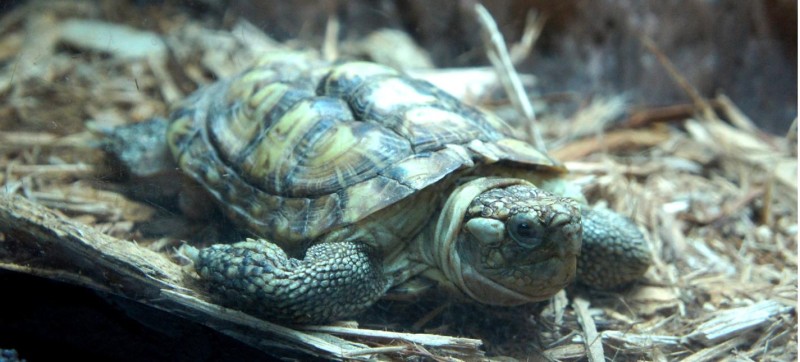Pancake Tortoise - Malacochersus tornieri
Habitat:
Arid scrub and savannah in altitudes from 100 to 6000 ft.
Range:
Native to Southern Kenya and Northern and Eastern Tanzania
Social Structure:
Live in isolated colonies. Males may fight during the breeding season.
Diet:
Herbivore – feeds on mainly grass and fallen fruit. Feeding happens early in the morning when the tortoise comes out of hiding to feed.
Reproduction:
Breeding occurs from January to February and nesting is from July to August, with an incubation time of 113 to 221 days. One to two clutches are laid per year. One to four oblong eggs hatch into 1 ½ inch long hatchlings.
Status:
Vulnerable, they are in Appendix II of CITES and are part of an AZA Species Survival Plan.
Interesting Facts:
- The pancake tortoise has such a flexible shell that it moves in and out as the animal breaths.
- Can move quickly for a tortoise and is able to hide in rock crevices to escape predators.
- Once hidden in a crevice the pancake tortoise uses its spiky legs to lock itself in place.
- Males have longer and thicker tails than females

AZA cooperatively manages this species as a Species Survival Plan® Program.




